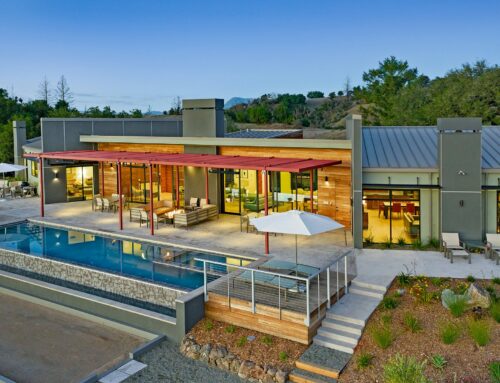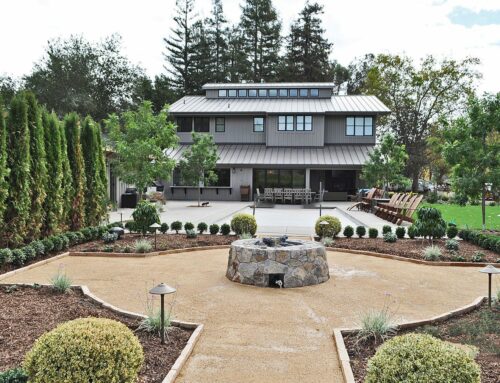There’s nothing like spending productive time outdoors when you live in a place as beautiful as Napa and Sonoma counties! If you’re looking to plan your own garden for the first time, you may be feeling overwhelmed by the sheer amount of planning and work that it entails. Annadel Builders Inc. is very familiar with the effort as well as the reward that planning a new project can have. To help you get started, we’ve broken garden planning into a few easy steps. Take a look at our suggestions as you begin the exciting process of creating an outdoor space that extend the comforts and fulfillment of your home.
- Map out your plot – Take the time to become familiar with site you plan on gardening. Make a note of existing plants and structures you’d like to keep or remove, as well as which areas receive the most sunlight. Explore different design ideas by trying to picture how they would unfold in the plot you’re considering, and make sure to ask yourself which features of the plot you’d like to emphasize so that you can prioritize them in your design scheme. Maybe you enjoy the view beneath a certain oak tree or maybe you’d like comfortable seating to watch the sunset from beneath your garden terrace. Whatever the case, make sure that your favorite features become a focal part in your design, rather than a neglected afterthought.
- Stay close to water – This tip is a must! The last thing you want to end up having to do is lug buckets of water every time your plants need to be watered. Instead, make sure that you can run a hose or design an irrigation system that can automatically water your plants on a fixed schedule. Depending on your requirements, there are any number of irrigation systems you can install, including pop-up sprinklers, drip irrigation, soaker hoses, and portable sprinklers.
- Invest in nutrient-rich soil – Before you attempt any planting, it’s important that you’ve first established a nutrient-rich environment. Consider purchasing a simple soil test from your local garden center that can tell you what your pH and nutrient levels are. After you’ve determined your soil status, do a little research into fertilizers. Find one that matches the needs of your soil and mix the fertilizer into the top 6 to 8 inches of your garden bed before planting.
- Learn you frost dates – Avoid catastrophe by familiarizing yourself with weather predictions before planting. Check the average last spring frost date and make sure you don’t plant before then. If surprised by an unexpected cold spell, make sure to cover tender young plants thoroughly with bed sheets, plastic, straw, hay, mulch, or leaves to prevent them from freezing.
- Pick your style – Spend some time searching through home design and gardening websites and magazines. Make a note of which styles you find most appealing, then start mapping out how you can integrate your favorites features into a cohesive design scheme. Just as in home design, it helps to establish an overarching theme for your garden. Are you looking to create a crisp, modern look with minimal foliage and clear-cut lines? Or are you wanting something more along the lines of a simplified cottage with lush foliage and lots of flowers? Whatever the theme, make sure you’re aware of it as you make your style choices.
- Make a plan – You’ve mapped out your plot, planned for natural variables, and selected a design. Now it’s time for logistics. Even if you’re starting small, having a plan is key to implementing a gardening project that is stress-free and successful. Take a trip to local nurseries and take pictures of the plants you plan on using. Look at their tags and make a note of when they bloom, what type of weather they prefer, and how much water they’ll need, then use this information to orchestrate a design scheme. For instance, make sure that all plants with particular requirements get first pick over more resistant plants in the garden plot layout. Also, make sure you’ve considered when each of the plants bloom. Avoid creating a sharp divide between early blooming plants and ugly bare skeletons that don’t regain their color until mid-summer. However, you should also consider how to incorporate enough variety to encourage year-round color of some kind. This balance can be a little tricky to find, but it often helps to have several shrubs, bushes, or even evergreen trees that retain green leaves year-round. When you’re finished, pull all your information together in a hand-sketched plan and you’re ready to go!
We understand the importance of every aspect of your Northern California home, even the garden. Learn more about Annadel Fine Home Builders’ building process and the sustainable vision that distinguishes our team of Northern California custom home builders: Contact Annadel Builders, Inc. today at (707) 579-6282 or [email protected].




